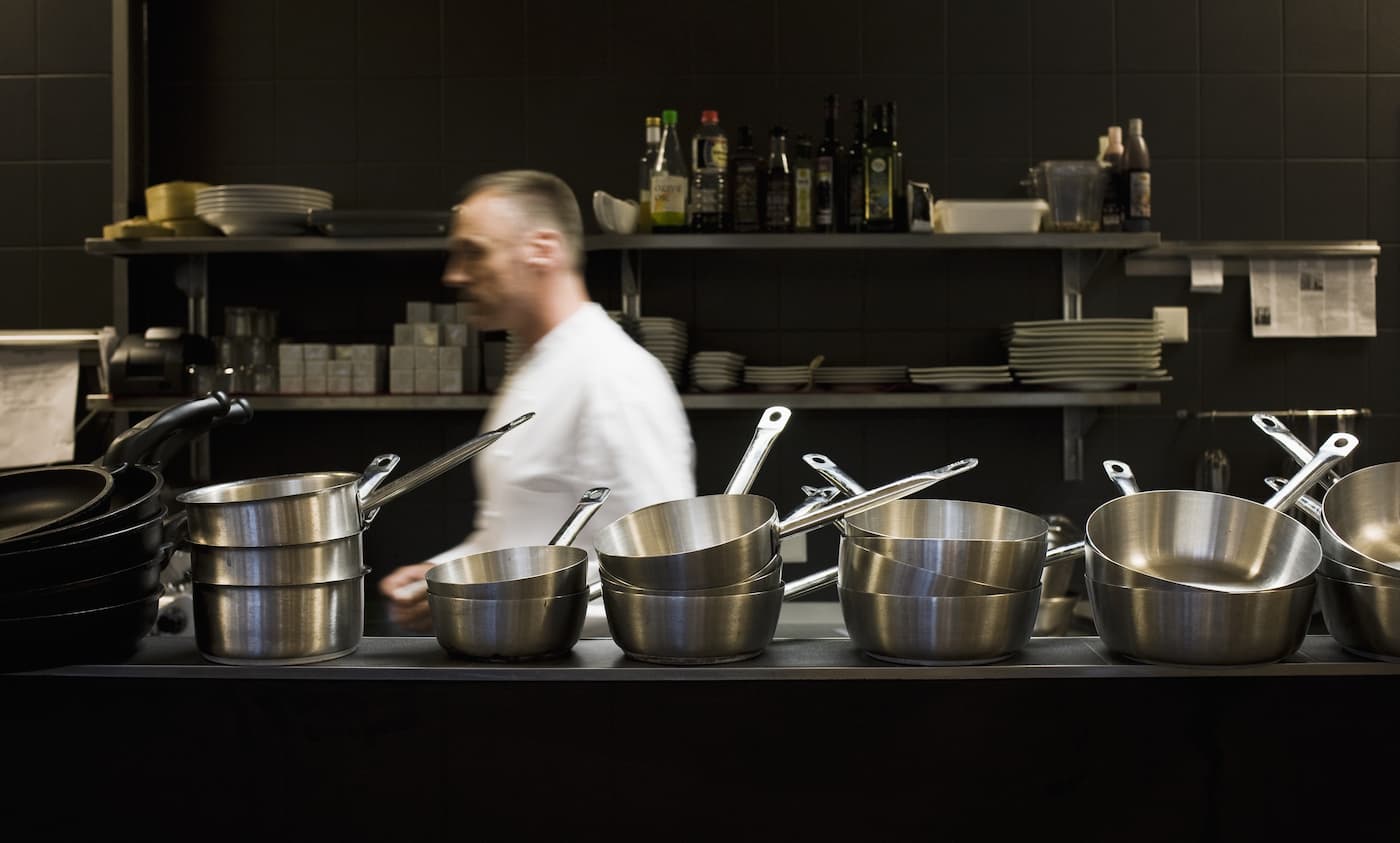Restaurant terms you need to know
Editorial Team
5 min read
Food service is a highly specialized industry, so much so that it can sometimes feel like a world unto itself. Put a newbie in the kitchen and he or she can easily become lost in a whirlwind of back-of-house shorthand. Remember Phoebe from Friends trying to prove her determination as a server by asking an imaginary cook for “Adam and Eve on a raft and sink ‘em!”? (That’s two eggs on a piece of toast with the yolks broken before service, FYI).
From bartenders and servers to sous chefs and management, restaurant workers use a well-developed and increasingly universal shorthand to communicate important information as quickly as possible. Here are some of the key restaurant terms all owners, operators, and managers should know before they hit the floor.
- 2-top, 4-top, etc.: This frequently used piece of restaurant lingo refers to the number of people in a reservation or party (group of people) waiting to be seated or the number of people a table is capable of accommodating (e.g., a 2-top is two people or a two-person table).
- 86’ed: An item that is 86’ed is no longer available because the restaurant has run out; it can also be used to describe a guest that was kicked out and/or banned for bad behavior (“He was overserved and got 86’ed.”).
- All day: The total amount of an item ordered (six salads for one table and two for another equals eight salads all day).
- Back of the house (BOH): The area of the restaurant not open to the public, including the kitchen, stock room, pick-up counter, etc.
- Behind: This is what employees call out to let a coworker know that the first employee is going to walk behind her or him, often with full hands.
- Bev nap: The little napkin square often used as a disposable coaster for drinks.
- Campers: Guests who overstay their welcome, typically chatting long after the table is cleared and the bill is paid, and sometimes even past closing time.
- Chit: An order or item printed from the restaurant’s POS system.
- Comp: A freebie given by management to a guest.
- Corner: What restaurant employees call out before they turn a corner to let anyone on the other side know that someone’s coming through.
- Covers: The number of guests at a table or the number of total guests served during a specific period.
- Cut: When management takes servers out of the rotation/stops giving them tables.
- Dead plate: Used to describe a plate/prepared meal that’s been left under the heat lamps for too long.
- Deuce: A two-top table or party of two people.
- Double shift: When an employee is scheduled to work shifts back-to-back.
- Expo/Expeditor: The person tasked with organizing the food produced by the kitchen and ensuring it’s sent to the dining room on time and to the right tables.
- Fire: A directive given to the kitchen or from one cook to another to start prepping an order.
- Flash: An uber-quick reheat of a dish, typically done under a broiler or salamander.
- Floor: The restaurant’s dining room.
- Food runner: The person who runs the food from the kitchen to guests seated on the floor.
- Front of the house (FOH): The area of the restaurant facing the public, typically the bar and dining room. FOH may also refer to the people working front-of-house positions.
- Heard: Employee-to-employee acknowledgement that the person speaking heard an order or directive and is going to act on it.
- In the weeds: A term referring to being so busy that you’ve fallen behind and might not be able to catch up.
- Kill it: Overcook the guest’s order (usually a protein such as steak) until it’s so well done it’s “dead”.
- Last call: A friendly head’s up that guests have one last opportunity to order from the bar before it closes.
- Mid: A swing shift covering the lunch-to-dinner period.
- Mise/Mise en place: A French cookery term that roughly translates to “everything in place” – used to describe the prepped ingredients on a cook’s station.
- On the fly: An indication that a server needs something extremely fast, likely because it was forgotten.
- Party: Another name for a group of guests (e.g., “party of five”).
- Pass: The area of the kitchen, often a stainless-steel countertop or shelf, used to pass food from the line to the expo/runners.
- QSR: An acronym that stands for “quick service restaurant”.
- Rail/Board: Where the cooks hold all order tickets while the food is being cooked.
- Run: Take this food somewhere (e.g., “Run this to table 22.”).
- Scripting: Restaurant terminology referring to the spiel shared with guests and the beginning of the visit re: specials, how the menu works, etc.
- Side work: The non-service duties service staff.
- SOS: An acronym for “sauce on the side”.
- Starter: An appetizer, something to start the meal.
- Stretch it: The kitchen’s attempt to make a limited amount of an ingredient last further than intended.
- Table turn: Cleaning and “flipping” a table after guests depart so it’s prepped for the next seating.
- Ticket: The POS printout showing a guest/table’s order.
- Upsell: Technique used to coax guests into spending more.
- Walkout: Guests who “dine and dash” or leave without paying.
- Waxing a table: Special treatment/extra attention given to VIP guests.
Restaurant slang is easiest to master when you become immersed in the culture. Spend time in your restaurant and you’ll be talking like a “local” in no time.
Interested in other ways to better understand your business? Chat with a Clover Business Consultant and learn how you can run your restaurant smarter, faster, and easier.
CONTACT SALESRelated Posts
Building Your Team? Here’s What You Need to Know About Payroll
Ideas for seasonal businesses: How to generate revenue off season
Popular Topics
Stay In Touch
Sign up and learn more about Clover.
Thank you for your subscription!
Recent Stories
- Jewelry store supplies and equipment needed for opening day
- How small businesses can use employee discounts to retain staff
- Tips and tricks for opening an outdoor pop-up restaurant
Please share your contact information
to access our premium content.
Thank you for sharing your contact information.
Download Now





